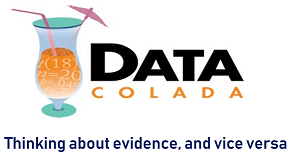A few years ago, we developed p-curve (see p-curve.com), a statistical tool that identifies whether or not a set of statistically significant findings contains evidential value, or whether those results are solely attributable to the selective reporting of studies or analyses. It also estimates the true average power of a set of significant findings [1]….
[66] Outliers: Evaluating A New P-Curve Of Power Poses
In a forthcoming Psych Science paper, Cuddy, Schultz, & Fosse, hereafter referred to as CSF, p-curved 55 power-posing studies (.pdf | SSRN), concluding that they contain evidential value [1]. Thirty-four of those studies were previously selected and described as “all published tests” (p. 657) by Carney, Cuddy, & Yap (2015; .htm). Joe and Uri p-curved…
[65] Spotlight on Science Journalism: The Health Benefits of Volunteering
I want to comment on a recent article in the New York Times, but along the way I will comment on scientific reporting as well. I think that science reporters frequently fall short in assessing the evidence behind the claims they relay, but as I try to show, assessing evidence is not an easy task….
[64] How To Properly Preregister A Study
P-hacking, the selective reporting of statistically significant analyses, continues to threaten the integrity of our discipline. P-hacking is inevitable whenever (1) a researcher hopes to find evidence for a particular result, (2) there is ambiguity about how exactly to analyze the data, and (3) the researcher does not perfectly plan out his/her analysis in advance….
[63] "Many Labs" Overestimated The Importance of Hidden Moderators
Are hidden moderators a thing? Do experiments intended to be identical lead to inexplicably different results? Back in 2014, the "Many Labs" project (htm) reported an ambitious attempt to answer these questions. More than 30 different labs ran the same set of studies and the paper presented the results side-by-side. They did not find any…
[62] Two-lines: The First Valid Test of U-Shaped Relationships
Can you have too many options in the menu, too many talented soccer players in a national team, or too many examples in an opening sentence? Social scientists often hypothesize u-shaped relationships like these, where the effect of x on y starts positive and becomes negative, or starts negative and becomes positive. Researchers rely almost…
[61] Why p-curve excludes ps>.05
In a recent working paper, Carter et al (htm) proposed that one can better correct for publication bias by including not just p<.05 results, the way p-curve does, but also p>.05 results [1]. Their paper, currently under review, aimed to provide a comprehensive simulation study that compared a variety of bias-correction methods for meta-analysis. Although the…
[60] Forthcoming in JPSP: A Non-Diagnostic Audit of Psychological Research
A forthcoming article in the Journal of Personality and Social Psychology has made an effort to characterize changes in the behavior of social and personality researchers over the last decade (.htm). In this post, we refer to it as “the JPSP article” and to the authors as "the JPSP authors." The research team, led by…
[59] PET-PEESE Is Not Like Homeopathy
PET-PEESE is a meta-analytical tool that seeks to correct for publication bias. In a footnote in my previous post (.htm), I referred to is as the homeopathy of meta-analysis. That was unfair and inaccurate. Unfair because, in the style of our President, I just called PET-PEESE a name instead of describing what I believed was…
[58] The Funnel Plot is Invalid Because of This Crazy Assumption: r(n,d)=0
The funnel plot is a beloved meta-analysis tool. It is typically used to answer the question of whether a set of studies exhibits publication bias. That’s a bad question because we always know the answer: it is “obviously yes.” Some researchers publish some null findings, but nobody publishes them all. It is also a bad…
